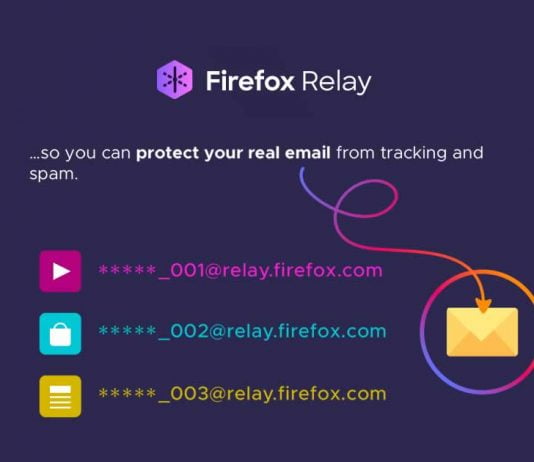In addition to the Firefox web browser, Mozilla has released various tools — like Facebook Container, Firefox Monitor, or Mozilla VPN — focused on protecting and helping the user on the internet.
Recently, Mozilla has launched a new tool of this type. Its name is Firefox Relay, it is in beta, and its purpose is to hide your email address and thus help you protect your digital identity.
In short, it is about promoting your anonymity when you surf the internet, safeguarding your privacy despite the obligation, in many cases, to register or fill out forms to access certain online services.
Precisely, the information that we contribute to the web, often in a conscious and obligatory way, is collected by different companies and online agents. Over time they are exchanged, crossed, and, consequently, our digital identity is exposed and provides excessive data about us, our online presence, or our internet habits.
The operation of Firefox Relay consists of installing its extension in Firefox. As usual, it is a free extension. Once installed, for it to work, you must create a new alias or profile. Consequently, you will get a random but functional email address that ends in @relay.firefox.com. Relay will forward messages to the primary email address associated with your account. Like any email service, it allows you to receive attachments. For now, the limit is 150 KB per message and/or attachment.
From now on, when you have to register as a user, register, or fill in forms with your email address, you can choose Firefox Relay your random address, which will act as a parapet or defense of your real digital identity.
On the one hand, this Mozilla tool will combat spam, that is, unwanted or invasive email messages. In addition, you will prevent your email address from circulating freely on the internet in databases that, sooner or later, will end up in the wrong hands.
Firefox Relay integrates into the Firefox browser as any other extension. In addition, its button will appear when necessary to fill in the corresponding field. And from the address bar, you can check your aliases and mailboxes to check if you have received spam or normal messages.
In practice, it is a temporary email service to prevent spam and protect your digital identity. You’ll find more information on their FAQ page.
